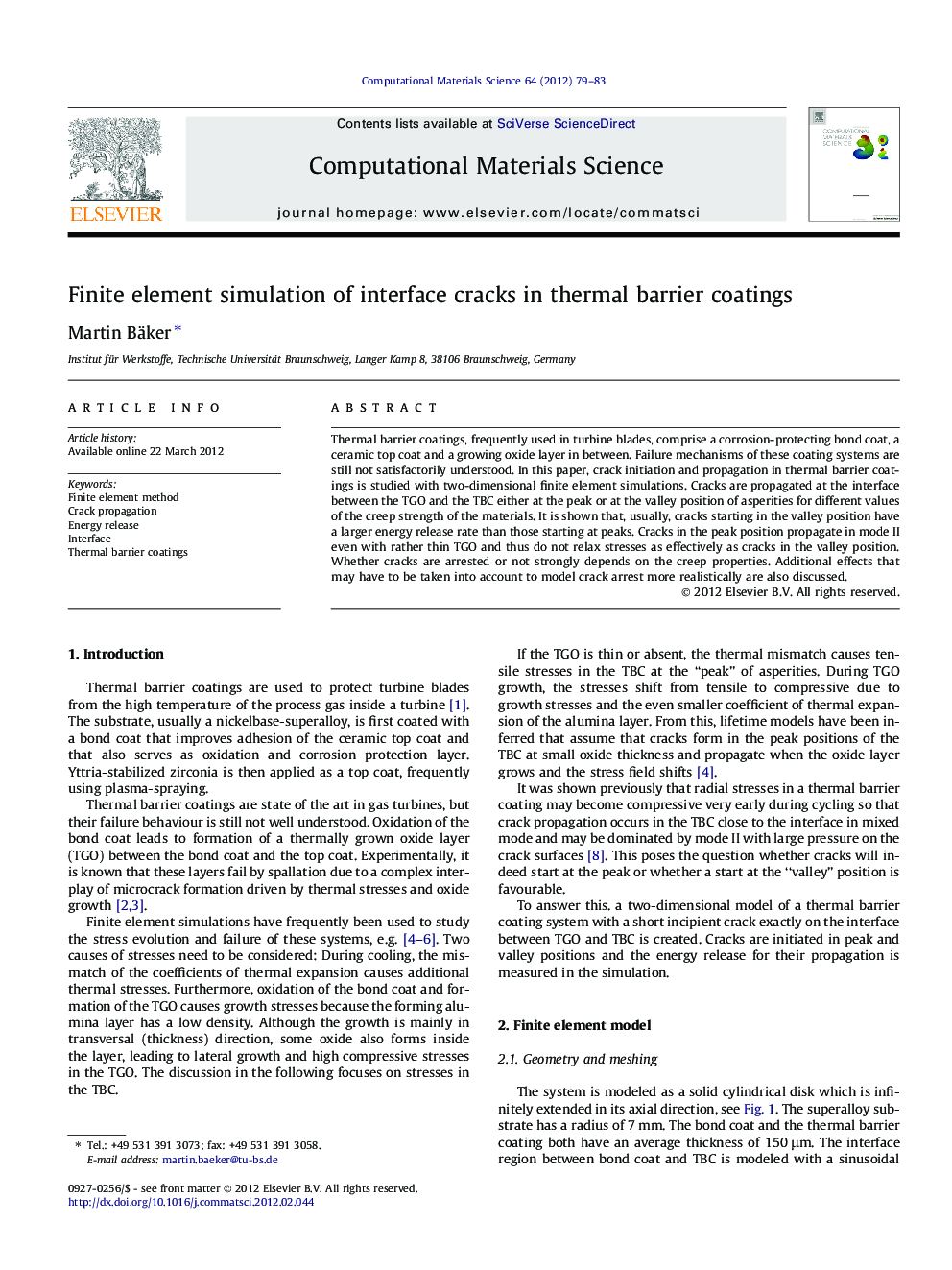| Article ID | Journal | Published Year | Pages | File Type |
|---|---|---|---|---|
| 1561687 | Computational Materials Science | 2012 | 5 Pages |
Thermal barrier coatings, frequently used in turbine blades, comprise a corrosion-protecting bond coat, a ceramic top coat and a growing oxide layer in between. Failure mechanisms of these coating systems are still not satisfactorily understood. In this paper, crack initiation and propagation in thermal barrier coatings is studied with two-dimensional finite element simulations. Cracks are propagated at the interface between the TGO and the TBC either at the peak or at the valley position of asperities for different values of the creep strength of the materials. It is shown that, usually, cracks starting in the valley position have a larger energy release rate than those starting at peaks. Cracks in the peak position propagate in mode II even with rather thin TGO and thus do not relax stresses as effectively as cracks in the valley position. Whether cracks are arrested or not strongly depends on the creep properties. Additional effects that may have to be taken into account to model crack arrest more realistically are also discussed.
► Finite element modeling of thermal barrier coating failure. ► Cracks propagating along the interface. ► Energy release larger for valley cracks. ► Creep strongly influences crack propagation and crack arresting.
